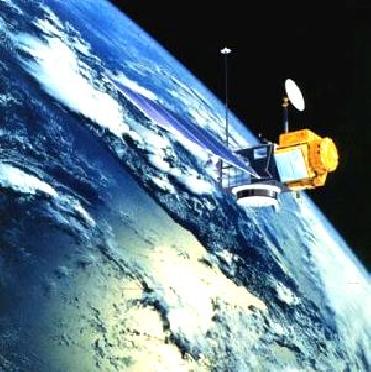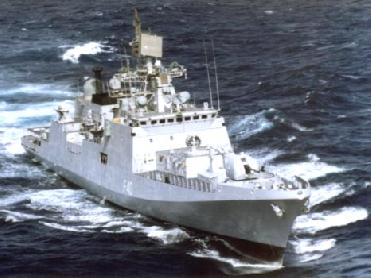
A generic graphical illustration of a satellite revolving the Earth's atmosphere. A file Photo.
India's space vision is to develop frontier space technology to come out with innovative space applications, to promote creative research in basic sciences and to facilitate the networking between industry and academia.
In a bid to inculcate interest in space-related activities among the younger generation, Indian Space Research Organisation (ISRO) will soon launch a micro satellite named ‘YOUTHSAT’.
YOUTHSAT is a joint scientific venture between India and Russia with participation of youth from universities in India and abroad.
It is a satellite project with 2 scientific payloads from ISRO and one from Moscow State University which will be launched to study the phenomenon of solar flare and ionospherical studies.
The second satellite in the micro satellite series, YOUTHSAT will carry payloads of scientific interest with participation of youths from Universities at graduate, post graduate and research scholar level. Youth from universities will participate from testing of the payloads in laboratory up to utilisation of the data from payloads.
Participation of youth will inculcate interest in space related activities and provide opportunities for realization of future payloads for scientific experiments. The micro satellite bus is planned and designed to carry different kinds of payloads like earth imaging, atmospheric applications, weather monitoring, stellar observations, scientific experiments etc.
PAYLOADS
The payloads provided by ISRO are RaBIT (Radio beacon for Ionospheric Tomography) which will be meant for two-dimensional mapping of ionospheric structures- both top and bottom side along the satellite path. And, Limb Viewing Hyper Spectral Imager (Visible) for the altitude profile of neutral and ionized species of the upper atmosphere.
Lomonosov Moscow State University of Russia provides the development of the scientific equipment SolRad for the measurement of temporal and spectral parameters of solar flare X-rays and gamma rays as well as of charge particle (electrons and protons) fluxes, which are sensitive to solar flare activity. The experimental equipment SolRad is intended for registration of hard X-ray radiation within the energy ranges of 10-100 keV, measurements of gamma- radiation within the energy ranges 0.02-5.0 MeV and charged particles: electrons with energy of 0.3-3.0 MeV and protons with energy of 3-100 MeV.
YOUTHSAT is planned to be launched as auxiliary satellite along with any remote sensing satellite planned for launch during 2009-10 in a polar sun-synchronous orbit of local time of around 0900 to 1030 hrs.
India and Russia have completed different agreements relating to cooperation in the development and use of the Russian GLONASS navigation satellites. In future, ISRO will also be contributing an X-ray astronomy instrument for the Russian satellite called CORONAS-PHOTON.
- Courtesy:
ISRO
Moscow State University Space Physics Portal
NASA Goddard Space Flight Center (ILWS)
 Previous Article
Previous Article Next Article
Next Article













The Indian Air Force, in its flight trials evaluation report submitted before the Defence Ministry l..
view articleAn insight into the Medium Multi-Role Combat Aircraft competition...
view articleSky enthusiasts can now spot the International Space Station (ISS) commanded by Indian-American astr..
view article